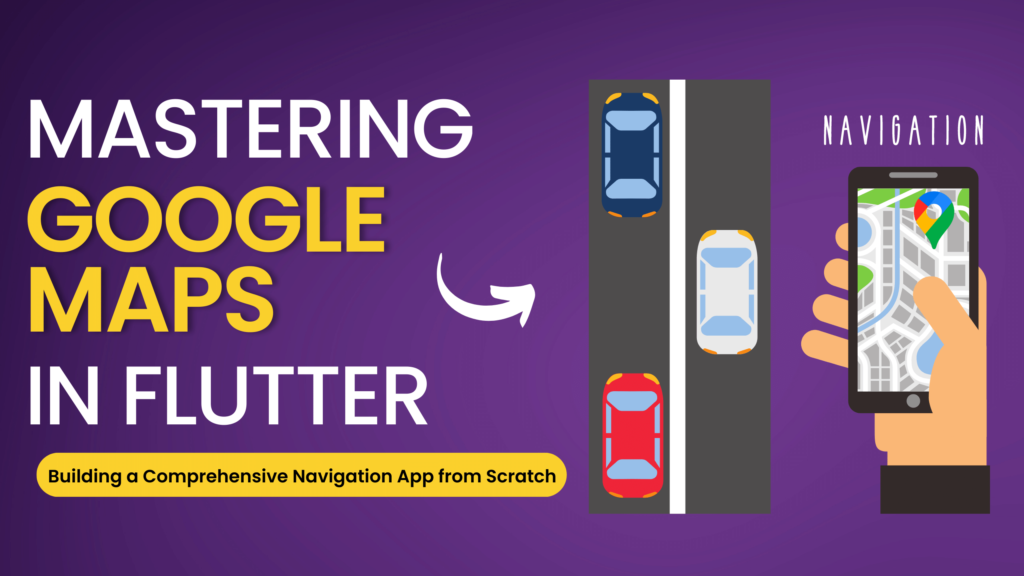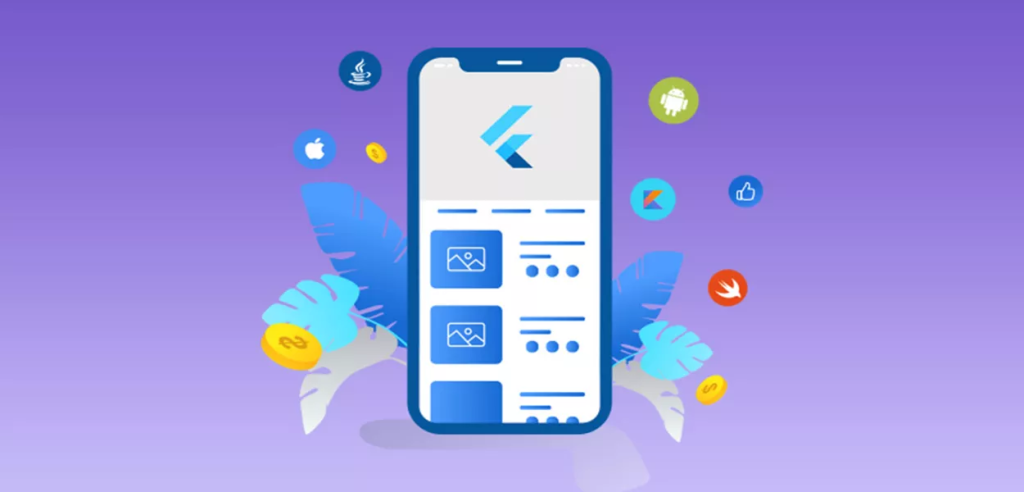In the rapidly evolving world of app development, scalability is not just a feature but a fundamental requirement for success. As applications grow in user base and functionality, their architecture must be capable of handling increased loads and expanding needs without compromising on performance or user experience. This is where Flutter, Google’s UI toolkit for building beautiful, natively compiled applications, comes into play. It offers a robust framework for developing scalable applications that can meet today’s demanding business environments.
Importance of Scalability in App Development
Scalability in app development refers to the ability of an application to handle a growing amount of work or its potential to accommodate growth. Effective scalability is crucial for maintaining smooth operation and optimal performance as the user base grows and usage intensifies. Without a scalable architecture, applications may suffer from slow response times, crashes, or even downtime, which can significantly affect user satisfaction and retention. Therefore, building with scalability in mind is essential for any app that aims for long-term success and a global reach.
Flutter’s Features Supporting Scalable Application Development
Flutter provides several features that make it an excellent choice for developing scalable applications:
- Cross-Platform Development:
- Flutter allows developers to write code once and deploy it on multiple platforms, including iOS, Android, web, and desktop. This unified codebase approach reduces development time and resources, ensuring consistency and efficiency across all platforms.
- Widget-Based Architecture:
- Flutter’s rich set of customizable widgets allows for building complex UIs that are not only beautiful but also optimized for performance. This widget-based architecture ensures that applications are not only scalable but maintain high performance as they grow.
- Hot Reload and Fast Iteration:
- The hot reload feature in Flutter speeds up the development cycle by allowing developers to instantly see the results of their changes without restarting the app. This capability is crucial for iterating quickly and scaling up app features in response to user feedback.
- Strong Ecosystem and Community:
- With a rapidly growing ecosystem of packages and plugins, Flutter enables developers to easily implement functionality such as network requests, data storage, and more. The vibrant community and support make it easier to tackle the challenges of scaling applications.
- Performance Optimization:
- Flutter compiles to native code, which helps in achieving performance that is comparable to native apps. This compilation process is vital for maintaining smooth and responsive applications as they scale.
By leveraging these features, developers can ensure that their Flutter applications are not only capable of scaling but also resilient under varying loads, providing a seamless user experience regardless of the size of the user base. As we dive deeper into the specific strategies for achieving scalable architecture with Flutter, it becomes evident how this framework can be the cornerstone of successful application development.
Fundamentals of Scalable Architecture in Mobile App Development
Scalability in mobile app development refers to an application’s ability to handle growth effectively, whether that growth is in terms of user numbers, data volume, or complexity of operations. A scalable app can maintain or improve its performance and efficiency as it scales up. This fundamental aspect is crucial for ensuring that the app remains robust, responsive, and reliable as demands increase. Below, we delve into the key considerations necessary to design scalable applications, focusing on maintainability, modularity, and performance.
Definition of Scalability
In the context of mobile app development, scalability primarily concerns an application’s architecture and its ability to perform efficiently under increasing loads. This includes the app’s capability to:
- Expand: Accommodate an increasing number of users and data without degradation in performance.
- Adapt: Integrate new functionalities and improvements with minimal disruptions.
- Manage resources: Optimize the use of device and network resources, especially critical in mobile environments where constraints are more pronounced.
Key Considerations for Designing Scalable Applications
- Maintainability:
- Overview: Maintainability refers to how easily an application can be updated, modified, or enhanced. High maintainability is essential for scalability as it ensures that the app can evolve over time without excessive costs or complexity.
- Strategies:
- Use clean, well-documented code that adheres to established coding standards.
- Implement comprehensive testing (unit, integration, and end-to-end tests) to ensure that updates do not break existing functionalities.
- Adopt a version control system to manage changes and maintain a history of modifications.
- Modularity:
- Overview: Modularity involves structuring the application into separate, interchangeable modules, each responsible for a distinct aspect of the app’s functionality. This separation allows for easier scaling, updating, and testing of individual components without affecting the entire system.
- Strategies:
- Utilize design patterns like Model-View-Controller (MVC) or Model-View-ViewModel (MVVM) that encourage separation of concerns.
- Develop independent modules that interact through well-defined interfaces.
- Employ package managers and dependency injection to manage and isolate module dependencies effectively.
- Performance:
- Overview: Performance in scalable applications pertains to the app’s responsiveness and efficiency under various operational loads. Optimizing performance is key to maintaining a smooth user experience as the app grows.
- Strategies:
- Optimize database interactions, use efficient querying and data retrieval methods, and consider using database indexing.
- Minimize frontend bloat by optimizing images, using lazy loading techniques, and minimizing the use of heavy libraries.
- Implement caching strategies to reduce server load and decrease data retrieval times.
By focusing on these critical areas—maintainability, modularity, and performance—developers can build a foundation for scalable mobile applications that are prepared to handle increased load and complexity. These considerations not only support growth but also help in maintaining a high-quality user experience, which is vital for the long-term success of the app. As we explore further, we’ll see how specific technologies and frameworks like Flutter facilitate these aspects of scalability through its various features and tools.
Designing Scalable UI in Flutter
When building applications with Flutter, creating a user interface (UI) that scales seamlessly across a wide range of devices is crucial. Scalable UI design ensures that the app provides a consistent and effective user experience regardless of the device’s screen size, orientation, or resolution. This section explores various techniques for building flexible and scalable user interfaces in Flutter, emphasizing the use of responsive widgets and dynamic layout structures.
Techniques for Building Flexible UIs in Flutter
- Responsive Design:
- Overview: Responsive design in Flutter involves creating UIs that automatically adjust to different screen sizes and orientations. This is crucial for ensuring that your application looks good and functions well on everything from smartphones to tablets to desktops.
- Implementation:
- Use media queries to obtain screen size information and adjust the layout accordingly.
- Employ the
FlexibleandExpandedwidgets withinRowandColumnlayouts to make the UI adapt to different screen proportions. - Consider aspect ratios and ensure that images and custom UI elements scale properly.
- Conditional Layouts:
- Overview: Different devices might require different layouts for optimal user experience. For instance, a navigation menu might be best as a bottom navigation bar on phones but a sidebar on tablets or desktops.
- Implementation:
- Use the device information obtained from Flutter’s
MediaQueryto conditionally render different widgets or layouts based on the device type or screen size. - Implement adaptive layouts using the
OrientationBuilderwidget to adjust the UI based on whether the device is in portrait or landscape mode.
- Use the device information obtained from Flutter’s
- Dynamic Font Sizing:
- Overview: Ensuring text appears legible across all devices is a key component of scalable UI design.
- Implementation:
- Utilize the
TextThemeandTextStyleto dynamically adjust font sizes. TheMediaQuerydata can help determine the appropriate scaling factor for text based on the screen size. - Consider using packages like
flutter_screenutilthat provide utilities for scaling the UI elements dynamically, including text.
- Utilize the
Using Responsive Widgets and Layout Structures
- Layout Widgets:
- Flexibility: Widgets like
Flexible,Expanded, andFractionallySizedBoxallow for dynamic resizing of UI components based on the available space, which is essential for a scalable UI. - Containers: The
Containerwidget can adjust its size based on its parent and can be very useful when combined with padding and alignment properties to adapt to different screens.
- Flexibility: Widgets like
- Adaptive Widgets:
- Overview: Flutter offers a suite of adaptive widgets that are designed to mimic the native behaviors of iOS and Android platforms.
- Examples: Widgets like
AdaptiveDialog,AdaptiveAppBar, andSwitch.adaptiveautomatically adjust their design according to the platform, ensuring that the app retains the native look and feel across all devices.
- Grids and Lists:
- GridView: The
GridView.builderallows building grid layouts that adapt to different screen sizes by modifying the number of columns dynamically. - ListView:
ListView.builderadapts to different screen sizes by modifying the size and layout of list items, ensuring smooth scrolling and performance.
- GridView: The
By effectively utilizing these techniques and tools, developers can ensure that their Flutter applications not only scale across multiple device formats but also maintain a high level of aesthetic consistency and functional robustness. This approach not only enhances user satisfaction but also significantly broadens the app’s potential audience.
State Management for Scalability in Flutter
Effective state management is crucial for building scalable Flutter applications. It ensures that the app remains maintainable and efficient as it grows in complexity and size. This section provides an overview of various state management techniques in Flutter, discussing their impact on scalability, and compares popular solutions like Provider, BLoC, Redux, and Riverpod.
Overview of State Management in Flutter
State management in Flutter is about how components (widgets) manage and propagate data changes. It impacts performance, codebase maintainability, and the overall scalability of applications. Good state management practices help in managing data flow in an application, making it easier to extend, maintain, and scale.
Popular State Management Techniques and Their Scalability Features
- Provider:
- Overview: Provider is a recommended, simpler approach by the Flutter team for managing state. It works well for small to medium-sized projects.
- Scalability Features:
- Decouples UI from logic: Allows for more modular and scalable code by separating business logic from UI components.
- Efficiency: Only rebuilds widgets that listen to changes, reducing unnecessary rebuilds.
- Use Case: Best for projects that require a straightforward solution without additional boilerplate.
- BLoC (Business Logic Component):
- Overview: BLoC is a pattern that uses streams and sinks to separate business logic from UI concerns, promoting a more reactive and scalable architecture.
- Scalability Features:
- Stream-based: Makes it easy to handle asynchronous data flow, which is ideal for dynamic data environments like network feeds.
- Testability and reusability: Enhances scalability by making parts of the app independent and easier to test and reuse.
- Use Case: Ideal for larger applications with complex data flows and where a clear separation of business logic is needed.
- Redux:
- Overview: Redux is a predictable state management library that manages the state of the app in a single immutable state object which helps in tracking state changes over time.
- Scalability Features:
- Centralized state management: Helps in managing state at a global level, making it easier to debug and track changes across the entire app.
- Middleware support: Allows for logging, crash reporting, and performing asynchronous tasks by intercepting actions.
- Use Case: Suitable for large-scale applications where state predictability and management are critical.
- Riverpod:
- Overview: Riverpod is a newer, more flexible, and safer alternative to Provider that addresses many of its predecessor’s limitations.
- Scalability Features:
- Compile-time safety: Offers a safer approach to managing state which reduces runtime errors and improves app stability.
- Enhanced flexibility: Allows state to be overridden for a part of the app, supporting more complex and scalable app architectures.
- Use Case: Perfect for applications requiring high levels of stability and scalability with complex state management needs.
Impact of State Management on Scalability
The choice of state management technique can significantly impact the scalability of a Flutter app. Techniques like BLoC and Redux, which offer more structured approaches with emphasis on separation of concerns and centralized state management, are typically better suited for larger, more complex applications. In contrast, simpler approaches like Provider or even Riverpod provide sufficient scalability for many apps and are often easier to implement and maintain.
Modularizing Flutter Code
In the development of large-scale applications, particularly those built using Flutter, modularization is a key strategy that significantly enhances scalability and maintainability. Modular code involves organizing an application into independent, interchangeable modules, each responsible for a distinct aspect of the application’s functionality. This approach not only facilitates easier updates and maintenance but also improves collaboration among developers by clearly defining boundaries and responsibilities.
Importance of Modular Code in Application Scalability
- Simplified Maintenance:
- Modular architecture simplifies updates and bug fixes as changes to one module can be made independently of others. This isolation reduces the risk of introducing bugs into unrelated parts of the application.
- Enhanced Reusability:
- By dividing the application into well-defined modules, components or entire modules can be reused in different parts of the application or even in different projects, which speeds up the development process and ensures consistency.
- Improved Scalability:
- Modular applications are easier to scale since new functionalities can be added as new modules without altering the existing codebase significantly. This modular growth capability facilitates scaling the application in line with user demands and business growth.
- Better Team Collaboration:
- In large development teams, modularization allows multiple developers or teams to work on different parts of the application simultaneously without causing conflicts. This parallel development streamlines workflow and enhances productivity.
Best Practices for Code Modularization in Flutter
- Use of Packages and Modules:
- Organize code into different Dart packages or modules. For example, separate packages for networking, data models, utilities, and UI components can help isolate functionalities and manage dependencies more effectively.
- Use Flutter’s package management capabilities to include external libraries or your own separate packages to avoid code duplication and maintain clarity.
- Separation of Concerns:
- Separate the application into layers of responsibility—data, business logic, and UI. For instance:
- Data Layer: Handles all data-related logic such as fetching data from the internet, caching, and parsing data.
- Business Logic Layer: Contains all the business rules and validations. This layer is typically implemented using BLoC, Provider, or any other state management technique to keep it decoupled from the UI.
- UI Layer: Focuses solely on presenting the data and interfacing with the user. It reacts to user inputs and requests data from the business logic layer.
- Separate the application into layers of responsibility—data, business logic, and UI. For instance:
- Dart Extensions and Libraries:
- Utilize Dart’s extension methods to add more functionalities to existing classes without modifying them. This practice keeps the core classes clean and focused.
- Group related functionality into libraries, which can help in organizing the code better and controlling the scope of different functionalities within the app.
- Automated Testing for Each Module:
- Develop automated tests for each module independently. Ensuring that each unit passes its tests before integration contributes to the overall reliability and quality of the application.
- Use Flutter’s testing framework to write unit, widget, and integration tests to cover different aspects of each module.
By adhering to these best practices, developers can build Flutter applications that are robust, easy to maintain, and scalable. Modularization not only supports technical scalability but also aligns with strategic business goals by enabling faster feature development, easier bug fixes, and more efficient team collaboration.
Efficient Data Handling and Storage in Flutter
Efficient data handling and storage are pivotal for the scalability of any Flutter application. Managing data effectively ensures that the application remains responsive and performs well as it grows. This involves choosing the right storage solutions and implementing strategies that cater to both the immediate and long-term data needs of the application.
Strategies for Managing Data in a Scalable Flutter Application
- Data Caching:
- Implement caching mechanisms to store data locally on the device. This reduces the need for repeated network requests, speeds up data retrieval, and provides offline access to data.
- Use packages such as
shared_preferencesfor lightweight data orhivefor more complex data structures.
- Lazy Loading:
- Implement lazy loading techniques, especially for data-intensive applications like social media platforms or content streaming services. Lazy loading loads only the data necessary for the current view, reducing memory usage and speeding up initial load times.
- This can be particularly useful in list views or image galleries, where only items visible to the user are loaded initially.
- Data Pagination:
- When dealing with large datasets, such as logs or user-generated content, use pagination to divide data into manageable chunks. This approach not only improves UI responsiveness but also reduces the load on both the server and the client side.
- This strategy is crucial for RESTful APIs where data can be fetched in pages rather than a single, potentially large, data dump.
Options for Local and Remote Data Storage
- Local Storage Options:
- SQLite: A robust option for structured data storage that supports SQL queries, making it suitable for complex data operations. Flutter’s
sqflitepackage provides a comprehensive way to integrate SQLite into your applications. - Hive: A lightweight, NoSQL database that is fast and efficient for simpler, schema-less data structures. It’s a good choice for applications that require quick reads and writes.
- SQLite: A robust option for structured data storage that supports SQL queries, making it suitable for complex data operations. Flutter’s
- Remote Storage Options:
- Firebase Firestore: A scalable NoSQL cloud database that provides live data synchronization and offline support out-of-the-box. Its real-time capabilities make it ideal for applications requiring instant data updates such as chat applications or live sports scores.
- Firebase Realtime Database: Similar to Firestore but optimized for handling high volumes of short-lived data that changes very quickly.
- Custom RESTful APIs: For applications with specific backend requirements not covered by Firebase, custom APIs can be developed. These APIs can be hosted on servers like AWS, Azure, or Google Cloud, which offer scalable cloud hosting solutions.
- Combining Local and Remote Storage:
- Often, the best approach involves a combination of both local and remote storage. For example, critical user data can be stored in a cloud database for persistence and redundancy, while less critical data that requires quick access can be cached locally.
- Implement synchronization mechanisms to ensure that the local data stays up-to-date with its remote counterpart. This setup is vital for maintaining data integrity across the application.
Role of Data Storage Solutions in Supporting Scalability
The choice of data storage solutions plays a critical role in supporting the scalability of Flutter applications. Scalable storage solutions handle increases in data volume seamlessly and provide robust data management features that aid in maintaining application performance and user experience at scale. Whether it’s through optimizing data access patterns, reducing latency, or providing robust data integrity features, the right storage solution can significantly enhance the scalability and overall performance of an application.
By carefully considering these strategies and storage options, developers can ensure their Flutter applications are not only scalable but also efficient and robust in handling data as they grow.
Efficient Data Handling and Storage in Flutter
Efficient data handling and storage are pivotal for the scalability of any Flutter application. Managing data effectively ensures that the application remains responsive and performs well as it grows. This involves choosing the right storage solutions and implementing strategies that cater to both the immediate and long-term data needs of the application.
Strategies for Managing Data in a Scalable Flutter Application
- Data Caching:
- Implement caching mechanisms to store data locally on the device. This reduces the need for repeated network requests, speeds up data retrieval, and provides offline access to data.
- Use packages such as
shared_preferencesfor lightweight data orhivefor more complex data structures.
- Lazy Loading:
- Implement lazy loading techniques, especially for data-intensive applications like social media platforms or content streaming services. Lazy loading loads only the data necessary for the current view, reducing memory usage and speeding up initial load times.
- This can be particularly useful in list views or image galleries, where only items visible to the user are loaded initially.
- Data Pagination:
- When dealing with large datasets, such as logs or user-generated content, use pagination to divide data into manageable chunks. This approach not only improves UI responsiveness but also reduces the load on both the server and the client side.
- This strategy is crucial for RESTful APIs where data can be fetched in pages rather than a single, potentially large, data dump.
Options for Local and Remote Data Storage
- Local Storage Options:
- SQLite: A robust option for structured data storage that supports SQL queries, making it suitable for complex data operations. Flutter’s
sqflitepackage provides a comprehensive way to integrate SQLite into your applications. - Hive: A lightweight, NoSQL database that is fast and efficient for simpler, schema-less data structures. It’s a good choice for applications that require quick reads and writes.
- SQLite: A robust option for structured data storage that supports SQL queries, making it suitable for complex data operations. Flutter’s
- Remote Storage Options:
- Firebase Firestore: A scalable NoSQL cloud database that provides live data synchronization and offline support out-of-the-box. Its real-time capabilities make it ideal for applications requiring instant data updates such as chat applications or live sports scores.
- Firebase Realtime Database: Similar to Firestore but optimized for handling high volumes of short-lived data that changes very quickly.
- Custom RESTful APIs: For applications with specific backend requirements not covered by Firebase, custom APIs can be developed. These APIs can be hosted on servers like AWS, Azure, or Google Cloud, which offer scalable cloud hosting solutions.
- Combining Local and Remote Storage:
- Often, the best approach involves a combination of both local and remote storage. For example, critical user data can be stored in a cloud database for persistence and redundancy, while less critical data that requires quick access can be cached locally.
- Implement synchronization mechanisms to ensure that the local data stays up-to-date with its remote counterpart. This setup is vital for maintaining data integrity across the application.
Role of Data Storage Solutions in Supporting Scalability
The choice of data storage solutions plays a critical role in supporting the scalability of Flutter applications. Scalable storage solutions handle increases in data volume seamlessly and provide robust data management features that aid in maintaining application performance and user experience at scale. Whether it’s through optimizing data access patterns, reducing latency, or providing robust data integrity features, the right storage solution can significantly enhance the scalability and overall performance of an application.
By carefully considering these strategies and storage options, developers can ensure their Flutter applications are not only scalable but also efficient and robust in handling data as they grow.
Case Studies: Scalable Flutter Applications
Exploring real-world examples of scalable Flutter applications provides invaluable insights into effective practices and lessons learned. These case studies highlight how businesses have successfully implemented scalable architectures using Flutter, managing to maintain high performance and excellent user experiences as their applications grew. Here, we discuss two significant case studies that illustrate the successful scaling of Flutter applications in different industries.
Case Study 1: Alibaba’s Xianyu App
Overview: Alibaba’s Xianyu app is a second-hand trading platform that has successfully implemented Flutter to handle a massive user base with diverse and dynamic content needs. The app is one of the largest implementations of Flutter in a commercial setting.
Scalable Features Implemented:
- Modular Architecture: Xianyu’s developers utilized a modular approach, dividing the app into various independent modules. This strategy helped manage the complexity of a large-scale app and simplified updates and maintenance.
- Robust State Management: The app uses a combination of Provider and Bloc for state management to efficiently handle state in a scalable manner, ensuring smooth and responsive user interactions.
- Customized Scalable UI: Xianyu developed a flexible UI system that adapts seamlessly across multiple device types and orientations, enhancing the user experience and engagement.
Lessons Learned:
- The modular approach facilitated faster development cycles and easier scaling as new features were needed.
- Effective state management is crucial for maintaining performance and user experience in large-scale applications.
- Investing in a scalable UI design from the start pays off in long-term user retention and satisfaction.
Case Study 2: Reflectly App
Overview: Reflectly is a personal journaling app that uses artificial intelligence to help users manage stress and thoughts. The app transitioned to Flutter to leverage cross-platform capabilities while maintaining a smooth, native-like user experience.
Scalable Features Implemented:
- AI Integration: Reflectly incorporates AI to offer personalized content and responses, utilizing Flutter’s capability to handle background computations effectively.
- Data Handling and Caching: The app uses advanced caching mechanisms and data pagination to manage the large volumes of data being processed, keeping the app responsive and agile.
- Performance Optimization: Reflectly focuses on performance optimization techniques such as lazy loading and efficient data querying, essential for maintaining the app’s performance as the user base grows.
Lessons Learned:
- AI and machine learning can significantly enhance user engagement but require careful integration into the app’s architecture to scale effectively.
- Advanced caching and data management strategies are vital for apps dealing with large data sets and user interactions.
- Continuous performance optimization is necessary to maintain a high-quality user experience in a scalable app.
These case studies demonstrate the versatility and robustness of Flutter as a framework for building scalable mobile applications. They highlight important considerations such as modular architecture, state management, AI integration, and performance optimization, which are crucial for developing successful, scalable apps. Each case provides valuable lessons that can guide developers in their own projects, emphasizing the importance of planning for scalability from the outset to ensure sustainable growth and user satisfaction.
Conclusion
Building scalable applications with Flutter offers a promising path for developers aiming to create robust, efficient, and high-performing mobile apps that can grow seamlessly alongside user demand and technological advancements. Throughout our exploration of scalable architecture in Flutter, we have identified several key components and best practices that are essential for success.
From designing flexible and responsive user interfaces to implementing effective state management strategies, the choices made during the development process can significantly impact the scalability and overall performance of the application. Modular code organization enhances maintainability and facilitates easier updates and feature additions, while efficient data handling ensures that the application remains responsive and performant regardless of the volume of user interactions or data processed.
Moreover, the case studies of Alibaba’s Xianyu and the Reflectly app provide concrete examples of how Flutter’s capabilities can be harnessed to build applications that are not only scalable but also maintain high standards of user experience and performance. These examples also underscore the importance of continuous optimization and adaptation in maintaining scalability — principles that hold true across all dimensions of software development.
As Flutter continues to evolve and expand its ecosystem, the opportunities for building scalable applications will only increase. The lessons learned from successful implementations should serve as a guide for developers to harness Flutter’s full potential, ensuring that their applications are well-equipped to handle growth and change efficiently. Whether you are building a small startup app or working on a large-scale enterprise project, the principles of scalability are crucial in delivering a product that is durable, adaptable, and ultimately successful in the competitive tech landscape.





